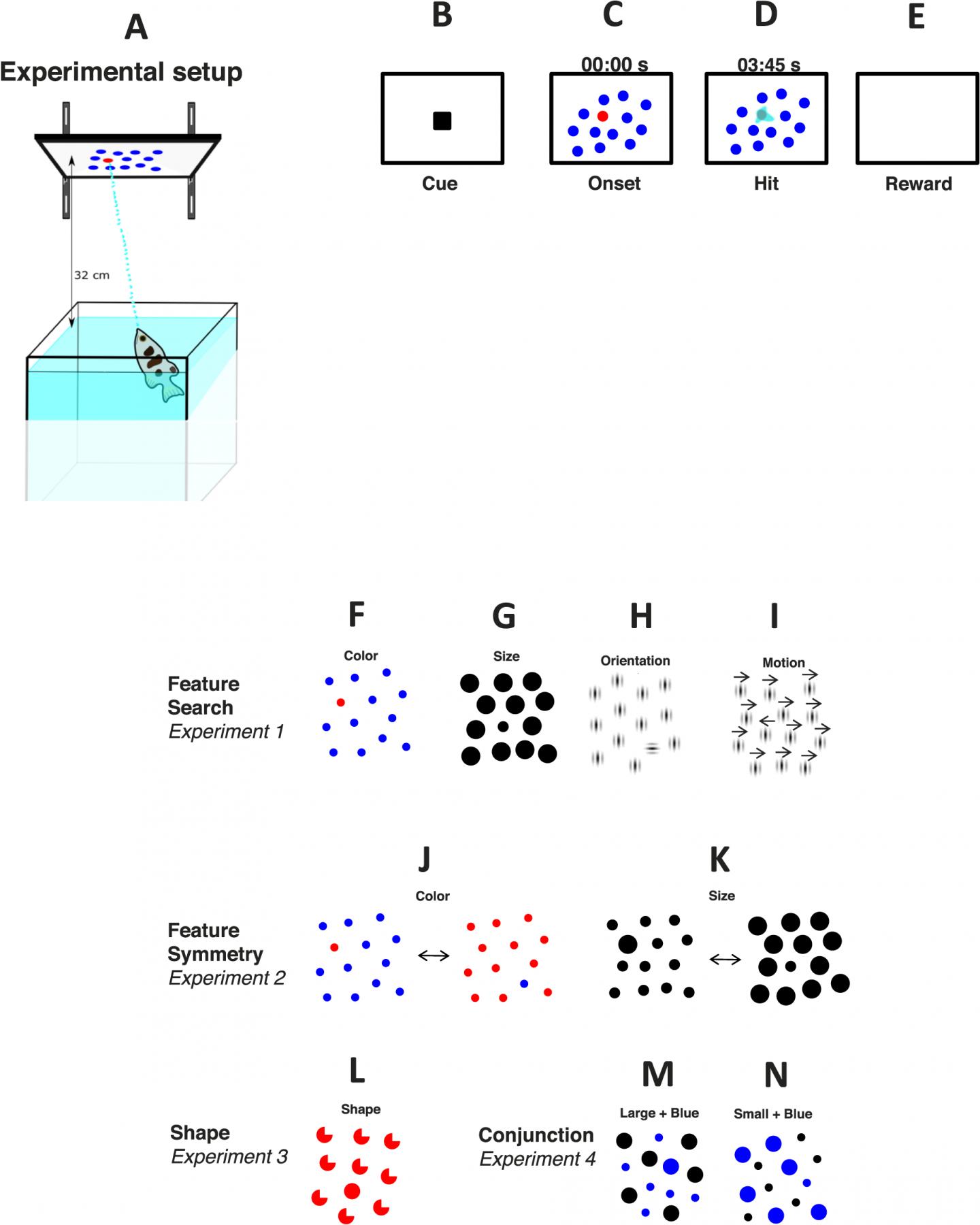
Credit: Ben-Gurion U.
BEER-SHEVA, Israel…February 4, 2019 – Humans, fish and, most likely, other species rely on identical visual features — color, size, orientation, and motion — to quickly search for objects, according to researchers at Ben-Gurion University of the Negev (BGU).
The study published in the Journal of Vision involved target-training archerfish, a species with unique visual hunting skills that is widely used in experiments that evaluate visual perception. Click here to watch a video of the experiment.
In their natural habitat, archerfish hunt by spitting a jet of water at insect prey on overhanging leaves to dislodge and eat them. BGU researchers trained the fish to distinguish between objects on a computer monitor above them and shoot at a desired target. By doing so, the fish were able to participate in a controlled experiment the same way humans do: simply by watching a computer screen and answering questions.
“The experiments tested archerfish performance in visual-search tasks where a target was defined by color, size, orientation, or motion,” says Professor Ronen Segev, head of the BGU Neural Code Lab, and a member of the Department of Life Sciences and Zlotowski Center for Neuroscience. “We found, for the first time, that archerfish process these four features in much the same way humans identify a target amidst distracting shapes and colors.”
Learning more about which features pop out for different species against distracting backgrounds and recognizing variabilities– what is the same and what is different — is important for understanding how animals target what they need to survive, reproduce and avoid predators.
“There is extensive evidence that color, size, orientation, and motion are the most efficient features for guiding a human’s attention. We found the same universal features will also make a target pop out against a busy background for animals with very different brain anatomies and living environments,” says Professor Ohad Ben-Shahar, the chair of BGU’s Department of Computer Science.
While the researchers confirmed that the same four visual search cues work for humans and archerfish, they question whether this is also true for other vertebrates, birds and amphibians. In addition to pinpointing the most effective visual cues, the BGU researchers were also able to identify that both humans and fish find it more difficult to target an object with a different shape or juxtaposition within a busy background.
“We can use these results to study the connection between a fish’s decision making, the functional properties of its visual system and other parts of the brain,” Segev says. “We recommend future studies delve into the evolutionary and developmental perspectives of what guides visual search in other species.”
###
The research team also included Adam Reichenthal, a graduate student in BGU’s Department of Life Sciences and the Zlotowski Center for Neuroscience, and Dr. Mor Ben-Tov, a BGU graduate who is currently a postdoctoral fellow at Duke University.
Funding was provided by the Israel Science Foundation (Grant 211/15), the Binational Science Foundation (BSF; Grant 2011058), the Frankel Fund at BGU’s Department of Computer Science, and the Helmsley Charitable Trust through the ABC Robotics Initiative of BGU.
About American Associates, Ben-Gurion University of the Negev
American Associates, Ben-Gurion University of the Negev (AABGU) plays a vital role in sustaining David Ben-Gurion’s vision: creating a world-class institution of education and research in the Israeli desert, nurturing the Negev community and sharing the University’s expertise locally and around the globe. As Ben-Gurion University of the Negev (BGU) looks ahead to turning 50 in 2020, AABGU imagines a future that goes beyond the walls of academia. It is a future where BGU invents a new world and inspires a vision for a stronger Israel and its next generation of leaders. Together with supporters, AABGU will help the University foster excellence in teaching, research and outreach to the communities of the Negev for the next 50 years and beyond. Visit vision.aabgu.org to learn more.
AABGU, headquartered in Manhattan, has nine regional offices throughout the United States. For more information visit https:/
Media Contact
Andrew Lavin
[email protected]
516-944-4486
Related Journal Article
http://dx.




